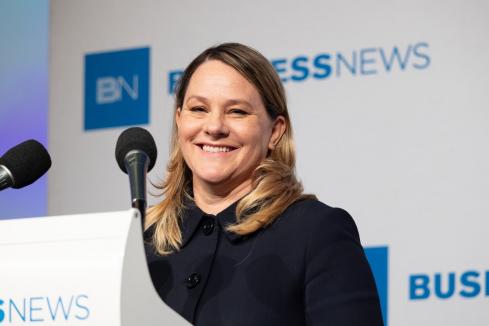WELLNESS@WORK: Healthier Workplaces WA is helping workers across the state get up and stay in shape.


Healthier Workplaces WA is helping workers across the state get up and stay in shape.
Sedentary behaviour rules in the Australian workplace.
According to the Australian Bureau of Statistics’ 2017-18 national health survey, 44 per cent of workers described their job as ‘mostly sitting’.
Further, according to the Australian Institute of Health and Welfare, 55 per cent of adults in 2017-18 did not perform an adequate amount of physical exercise, putting themselves at risk of developing chronic illnesses.
The ill-effects of spending days idle in front of a computer monitor are already well-established.
Though it may not be as dangerous as drug and alcohol abuse – sitting is not the new smoking – the science is clear; to live happier, healthier lives, employees need to stay fit and keep moving.
The need for workplaces designed to encourage better health outcomes is what drives Healthier Workplaces WA, an initiative delivered by Cancer Council WA and the state government’s health department.
Providing free consultation and services to businesses across Western Australia, Healthier Workplace WA helps offices apply wellness programs that focus on positive lifestyle changes, reducing sedentary behaviour and risk factors associated with the development of chronic illnesses.
Services provided by the organisation include supporting the development of robust and effective wellness programs, as well as delivering resources and consultation to businesses implementing health and wellness policies.
Senior project coordinator Hayley O’Connell told Business News Healthier Workplaces WA offered a range of program recommendations that could be adjusted for an array of different businesses.
“There’s a range of things a business can do,” Ms O’Connell said.
“Bigger businesses might do the bigger picture policies, whereas smaller businesses might focus on strategies that are quick, easy and can be implemented with no cost.”
For organisations of all sizes, Healthier Workplaces WA can tailor policies that will have the most effective outcomes for workers.
For smaller businesses, she said effective policies had included the use of computer programs to schedule and remind employees to take standing or walking breaks.
In one instance, Ms O’Connell cited advising a business to remove the rubbish bins from under desks to encourage employees to take standing breaks more often and walk to the kitchen.
Another implemented a policy where, for one day of the week, employees were not allowed to send internal emails.
“That way you have to get up and walk to whoever you want to talk to,” she said.
“It’s a bit of a gimmicky thing, but they’ve found it breaks up that sitting time.”
For larger businesses, she said employees had been provided corporate Smartriders, encouraging those attending work-related meetings in different locations to use public transport where possible.
Likewise, policies that accommodated employees who cycled or walked to work, like allowing extra time to shower and change when they arrived at the office, also encouraged workers to be more active in their workday.
On the more inventive side, she said some companies had been advised to invest in improving stairwells in buildings so they were more appealing to use.
Though productivity and health outcomes as a result of these policies could be hard to measure, Ms O’Connell said a commitment to them was often what mattered most.
“It’s about having a policy and demonstrating a commitment to physical activity,” she said.
One measure for success the organisation uses is its Recognised Healthy Workplace Program.
Developed in partnership with UnionsWA and the Chamber of Commerce and Industry WA, the program awards businesses with gold, silver or bronze ratings for their wellness policies, taking into consideration the longevity and comprehensiveness of the policies.
Organisations to have received a gold rating include RAC, the University of Western Australia, Chevron Australia and HBF.
By recognising organisations on this scale, Healthier Workplaces WA can measure the success of wellness policies.
Ms O’Connell said that was important because the productivity or health outcomes could be difficult to attribute.
“The reported benefits [of wellness programs] include increased morale, more engaged staff and higher retention and enhanced business reputation, rather than those cold, hard absenteeism and productivity rates,” she said.
“We say this is the best way to measure success.
“Whether they can get those statistics at the end of the day and say it was because they implemented a best practice program is a challenge.”
While most businesses self-reported the progress of their wellness programs, Ms O’Connell noted that Dobbie, a Malaga-based manufacturer recognised with a gold rating, was a business that had successfully captured the results of its program.
“They’ve done a lot of good things around workplace policies, around smoking, around alcohol and vending machine reviews, healthy catering, and good flexible arrangements, so people can commute to work and be physically active,” she said.
“They said they’ve observed significant improvements in employee enthusiasm, morale and attitudes, increased productivity and a decline in absenteeism.
“They’ve been successful in capturing that data where other workplaces have not.”
Though the positive outcomes of more movement in the workday might appear obvious, Ms O’Connell acknowledged that managers might not always be prepared to accept the changes necessary with a wellness program.
That’s a problem because successful policies require the cooperation of leadership.
“Management support is number one; without it, you’re not going to have an effective workplace wellness program,” she said.
“That can be quite challenging and is a whole other process in itself.”
Ms O’Connell said Healthier Workplace WA could advise interested parties on how to sell programs to sceptical leaders with strong business arguments, as well as helping link the outcomes with existing business strategies.
Often Healthier Workplace WA would advise those interested to start with pursuing smaller, cost-free policies, paving the way for more comprehensive programs.
“Sometimes, we find it’s about getting the small runs on the board and getting management to see the impact small things can have to get them to commit to more,” Ms O’Connell said.
“It can take a couple of years, and we’ve worked with quite a few workplaces where management has been resistant, but they’ve come on board over time through that slow approach.”















